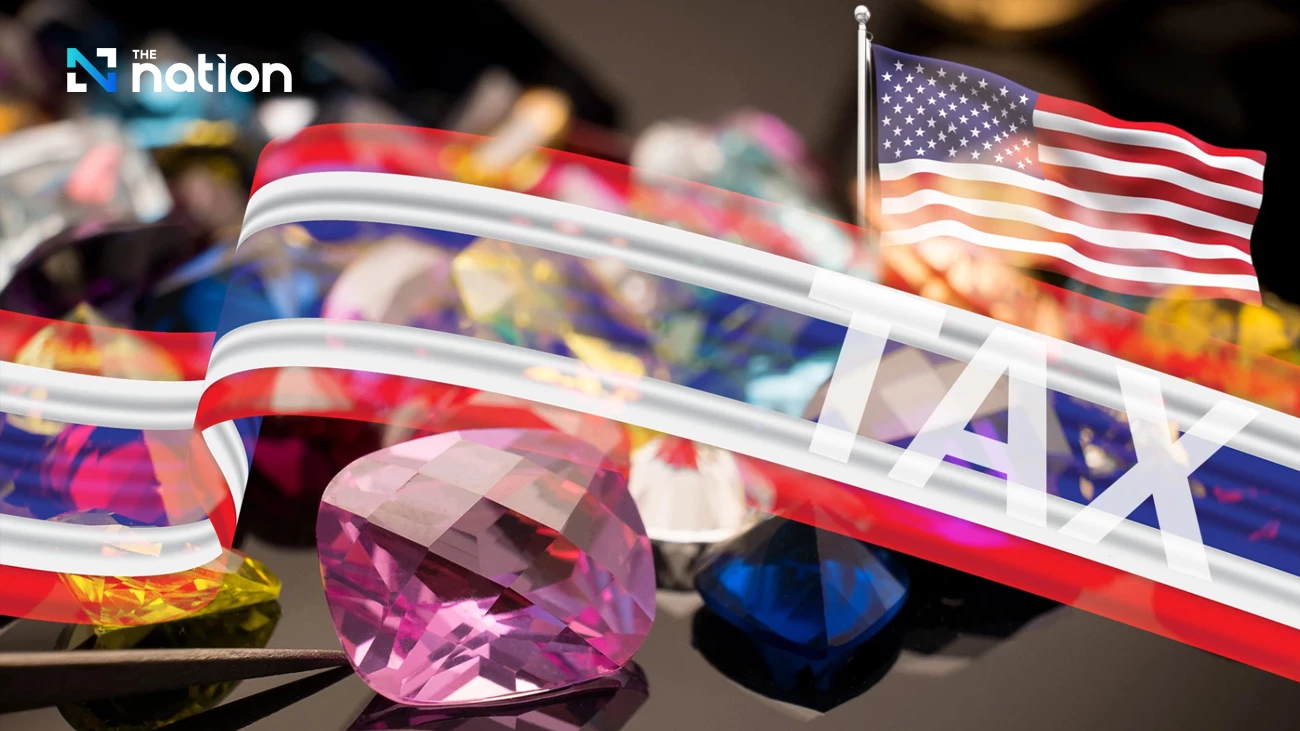
In the short term, Thailand and its competitors face a 10% tariff hike, while China and Hong Kong face a 30% increase, giving Thailand a relative advantage over them.
The United States is one of the largest markets for gemstones and jewelry globally and a key export destination for Thailand and many other countries. However, following the U.S. President’s announcement to increase import tariffs on gemstones and jewelry from all countries by 10%—effective from April 9 to July 9, 2025—exporters are closely monitoring the situation. After this period, the final tariff rate will depend on ongoing negotiations over the next 90 days.
The Gem and Jewelry Information Center reports that according to Global Trade Atlas data, in 2024 the U.S. imported gemstones and jewelry (excluding gold) worth $73.17 billion. The largest suppliers were Switzerland (17.72%), India (15.82%), South Africa (10.75%), Canada (7.57%), and Israel (5.89%). Thailand ranked 12th with a 2.49% share, followed by China at 13th with 2.37%.
Impact of U.S. Tariff Hike
In the short term, Thailand and its competitors face a 10% tariff hike, while China and Hong Kong face a 30% increase, giving Thailand a relative advantage over them.
However, Hong Kong acts as a major distributor of Thai goods to the U.S. indirectly. Higher tariffs on Hong Kong could reduce Thai exports routed through it due to increased prices.
Thai exports directly to the U.S. will see limited impact initially, but the 10% price increase could affect price-sensitive segments, potentially reducing consumption among some American consumers and causing smaller importers to cut back on Thai goods.
If, after July, competing countries—especially Vietnam and Sri Lanka—secure lower tariffs than Thailand, the kingdom could lose its competitive edge. Large jewelry companies might relocate production to countries with lower tariffs.
Vietnam and Sri Lanka, with labor forces capable of skill development and foreign investment incentives, could attract multinational companies to move production or choose these countries as export bases to the U.S. instead.
U.S. jewelry manufacturers will also face increased costs. Although raw materials like gold and platinum remain tariff-free, gemstones such as diamonds and colored stones carry high tariffs, raising production costs. This may prompt U.S. producers to reduce gemstone usage or switch to lab-grown alternatives, directly impacting Thailand, a major exporter of colored gemstones to the U.S. market.
Imported finished jewelry faces high customs duties, making such products more expensive in the U.S. market. This may advantage U.S.-made jewelry and encourage retailers to buy domestically made silver and gold jewelry, reducing imports from Thailand and other countries with high tariffs.
Besides rising U.S. import tariffs driving up jewelry prices and dampening demand, persistent inflation and a slowing economy have made American consumers more cautious, especially with luxury goods.
Thai exporters are therefore urged to promptly plan for these changes by adjusting strategies to reduce production costs—such as adopting more efficient technologies—and expanding exports to other potential markets. This diversification will help spread risk and sustain long-term competitiveness.
Source: The Nation
Share: